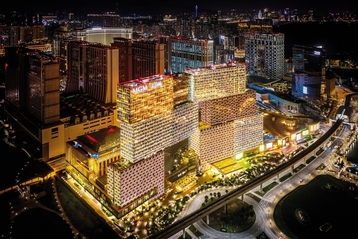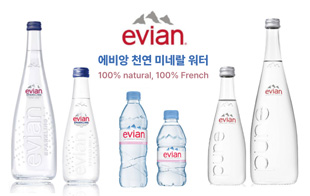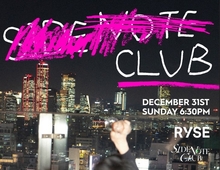
얼마 전 인도에 머무르면서, 또 한 번 이 나라의 새로운 면을 많이 알게 됐다. 인도는 여러 언어와 식문화가 공존하는 매력적인 나라다. 중국과 더불어 F&B 업계에 엄청난 기회가 있는 시장이기도 하다. 그러나 인도에서 사업을 하고자 한다면, 사업적 가능성이 높은 만큼 극복해야 할 과제나 좌절이 따라오는 것도 감수해야 한다.
예상치 못한 정부의 제재
길고 구불구불한 길을 거쳐 구르가온Gurgaon의 호텔에 도착했다. 밤인데도 바Bar 라운지는 썰렁했다. 인도 고등법원이 고속도로 주변 500m 이내에서 주류 판매를 금지했다는 사실이 떠올랐다.(기자 주: 구르가온 시내 중심에 델리-자이푸르 간 고속도로가 지나간다.) 이는 한 사건에서 비롯된 조치다. 어느 운전자가 음주운전으로 두 다리를 잃었다. 원래 대법원장이 법을 제정할 권한은 없지만(이는 국회의원의 몫이다), 그는 결국 해냈다. 이 조치는 그가 술을 마시지 않는 독실한 힌두교인이라는 점, 그리고 힌두 정당에 의해 통치되는 현 정부에서 아무도 반대 의견을 내지 않았다는 점 덕에 성사됐다. 인도 총리 나렌드라 모디Narendra Modi 역시 술을 마시지 않는다. 이 때문에 델리의 관광호텔과 쇼핑몰은 밤새 심심한 공간이 돼버렸다. 또한, 이 금지령의 영향을 받는 곳들은 어떻게 입구를 고속도로에서 500m 이상 떨어지게 만들지 고민한다. 이제 인기 있는 쇼핑몰, 인터넷 중심지(Cyber hub)에 가려면 30분 이상 걸린다. 많은 바들이 휴점했고, 레스토랑은 무미건조해졌다.
이러한 인도의 상황은 수일 내 해결돼야만 한다. 공무원들이 모든 장소에 방문해 고속도로에서 입구까지의 실제 거리를 측정한 후 확인하는 방법 등이 있겠다. 서양에서 온 나는 이 상황이 말도 안 된다고 생각하는데, 내 인도 친구는 이렇게 말하더라. “웰컴 투 인디아!”
이 이야기는 인도 F&B 업계에서 일어나는 수많은 에피소드 중 가장 최근 사례다. 많은 주에서 소고기는 완전히 금지됐고, 이는 물소까지 포함하는 것으로 번지고 있다. 최근 한 무슬림 농부가 심하게 구타당했다. 힌두교에서 신성시되는 소를 운반하고 있었다는 게 그 이유. 농부는 젖소를 이동시키는 것이었고, 당연히 소를 도축할 생각도 없었다는 사실이 드러났지만 이미 벌어진 일이다. 새로운 총리는 부패와 탄압을 줄이는 등 인도를 위해 좋은 일을 많이 하고 있다. 그러나 그의 정당은 민주주의의 자유를 누리는 많은 사람들에게 힌두교를 과하게 강요하고 있다.
무너지는 리테일 모델 the Retail Model
방콕, 자카르타, 상하이처럼 임대 수요가 높은 도시들과 비교하더라도, 인도 내 Tier 1 도시들의 임대료는 천문학적인 수준이다.(기자 주: Reserve Bank of India(RBI)는 인구를 기반으로 해 도시를 6개로 분류했다. Tier 1부터 Tier 6까지로 분류했는데, 인구가 가장 많은 곳이 Tier 1(2001년 센서스 기준 10만 명 이상), 가장 적은 곳이 Tier 6(5000명 이하)다.) 토지는 정부에 의해 촘촘하게 관리되고, 거대한 상업 지구도 대부분 차입금 비중이 높다. 소비가 감소하면 임대주가 임대료를 더 낮출 가능성이 아예 사라지고, 채무 원리금 상환 역시 어려워진다. 결국 가게의 마진도 낮아지게 된다. 레스토랑은 SNS나 배달 앱을 사용하는 등 온라인을 통해 고객을 유치하는 방법을 찾고 있다. Tier 1 도시에 사는 바쁜 맞벌이 부부, 혹은 요리를 도와줄 조부모가 가까이 살지 않는 사람들 사이에서 음식 배달 문화가 인기를 얻고 있다. 맥도날드나 버거킹 등 주요 서양 QSR(Quick service restaurants) 체인들은 좋은 영업 실적에도 불구하고 그들의 경제 모델을 고심하고 있다. 가장 성공적인 성장 스토리를 보여줬던 도미노마저 마진율이 낮아지는 상황에 처했다. 사적 자본이 KFC나 피자헛 등 산업 그룹에 의해 경영돼 온 회사를 매입하고 있다. 산업 그룹은 그간 많은 돈을 투자해 왔으나, 더 이상의 이윤은 적을 것으로 판단하는 것 같다.
인도 음식, 여전히 가능성 있어
로컬 음식 시장은 거의 분열됐다. 인도인들이 매일 먹고 마시기에 적당한 메뉴를 갖춘 체인들의 성장이 빨라지는 추세다. 마샬라 차이Masala Chai 등 인기 있는 차와 음식을 함께 서빙하는 ‘Chai Point’의 콘셉트는 인기가 많아 자금 조달도 쉽다. 그뿐 아니라 그들은 100개 점포를 오픈하고자 했던 처음 목표를 쉽게 달성했다. 이대로라면 1000개 점포 오픈도 가능할 것으로 보인다. 단 간식sweets, 플랫브레드flatbreads, 채식주의자 커리vegetarian currie, 비리야니biryani(쌀에 사프란·스피어민트와 같은 향신료와 닭고기 등을 넣고 볶은 인도식 볶음밥 요리)같은 종류의 요리는 엄청난 기회가 될 수도 있다. 영리한 로컬 기업가들은 소비자 의도를 빨리 파악해 큰 규모의 체인을 만든다. 그 성공 모델은 소매, 소셜 미디어, 배달을 포함한다. 또한, 이 성공 모델은 로컬 취향을 맞추는 것뿐 아니라, 2차 도시(로컬이 아닌 도시)에서 큰 규모로 개발하는 것 역시 중시한다.
Non-Indian 음식의 기회
지금까지 Non-Indian 음식 중 가장 인기 있는 것은 중식이었다. 문제는 인도인들이 좋아하는 중국 음식은 진정한 중국 요리나 다른 아시아의 요리와 많이 다르다는 것. 누군가 곧 이를 깨닫고 큰 사업을 시작할 것 같다. 햄버거 시장도 성장 가능성이 높은데, 서양식 햄버거는 아니라는 게 흥미롭다. 일본의 모스 버거MOS Burger를 떠올려 보자. 서양식 햄버거의 특징을 갖고 있지만 일본 느낌을 가미해 더욱 성공했다. 인도에 들어와 있는 서양 체인의 햄버거는 아주 맛있지는 않다. 보통 똑같은 치킨과 파니르 치즈버거를 판매한다.
도미노와 KFC의 성공이 보여주듯, 피자와 프라이드치킨은 성공 잠재력이 크다. 파파존스가 고군분투하는 동안, 저렴한 테이크아웃 피자를 주력 상품화한 ‘Little Caesars’ 등의 미국 브랜드가 입지를 넓혀 나갔다. 서브웨이의 성공으로, 샌드위치는 인도에서 성장 스토리를 써 나가고 있다. 아시아 외식 마켓 중에, 샌드위치가 큰 비중을 차지하고 있는 시장은 인도와 호주/뉴질랜드 두 곳뿐이다.
인도의 샌드위치 이야기를 했으니, 이제 채식주의자의 입장에서 이야기하겠다. 아직까지 중국 요리를 제외한 한국·일본 요리는 거의 매력이 없었다. 만약 새로운 요리가 빛을 본다면 아마 스시일 거라 생각한다. 스시는 건강한 음식이라는 이미지가 있기 때문이다. 하지만 그렇게 되기까지 시간은 좀 걸릴 거다.
인도 시장은 어마어마하게 크다. 또 빠르게 성장하고 있다. 파리바게트처럼 서양 특성을 가미한 한국 외식 브랜드는 가능성이 있다. 하지만 당분간 불고기나 비빔밥은 잊어라.
India Is Attractive But Very Messy!
I just spent time in India and continue to learn more about the country on every visit. It is an absolutely fascinating place with many languages and food cultures and one of the top two largest market opportunities in Asia for F&B concepts, the other of course being China. While there is great business potential for sure, there are also large challenges and frustrations common to most fast growing emerging markets.
Lots of Unexpected Government Interventions
I arrived at my hotel in Gurgaon to find a different entrance which was a long and winding road. The bar lounge was empty which was unusual at night. I found out soon after that the India High Court just ruled that alcoholic beverages could not be sold in any establishment that was 500 meters or shorter to any highway in the country. It ruled based on a court case concerning a driver who lost both his legs in a car crash due to drunk driving. While the Chief Justice has no authority to make a law, that is what legislators do, he did it anyway. It turns out that he is a devout Hindu who does not drink and there was no opposition to the decision by the current government that is ruled by a Hindu political party. The Prime Minister himself, Narendra Modi, does not drink. Overnight a significant number of tourist hotels and malls in Delhi became dry and the effected parties were trying to figure out how to lengthen their entrances beyond 500 meters to escape the ban. It now takes almost 30 minutes to enter the most popular mall, Cyber Hub, due to this court decision and as of yesterday all bars were closed and all restaurants were dry. Being India, the situation should be resolved in a few days as government officials visit all these locations to confirm the actual measurements of the entrances. To a Westerner the whole situation appears ridiculous but as my local friends tell me, “Welcome to India!”
This is just the latest of many episodes to effect the F&B industry. In many states, beef is banned entirely and the ban has spread to include water buffalo. Recently, a Muslim farmer was beat up because he was transporting cows which is held sacred by Hindus. It turns out they were milk cows and the farmer had no plans to slaughter them. While the new Prime Minister is doing many good things for the country such as reducing both corruption and regulation, his party is also going too far to enforce Hindu laws on a population accustomed to democratic freedoms.
The Retail Model is Broken
Commercial lease prices in Tier 1 cities are astronomical considering the purchasing power of the general population, even when compared to other high rental cities like Bangkok, Jakarta and Shanghai. Land is tightly controlled by the government and most large commercial properties are highly leveraged. If there is a consumption downturn, it is highly unlikely that landlords can afford to lower rents and still make the debt service payments. The end result is that store level margins are very low and restaurants are looking for more ways to connect with their customers online through social media and delivery apps. Food delivery is booming in Tier 1 cities in India with the growth of time starved two income couples and the absence of a grandparent nearby to help with cooking. The major Western QSR chains like McDonald’s and Burger King are struggling with their economic models despite good sales, and the most successful growth story, Domino’s, is showing signs of declining margins. Private equity is buying up KFC and Pizza Hut regions from industrial groups that are no longer interested in waiting for a decent return on their investments.
Indian Food is still the Best Opportunity
The local cuisine market is highly fragmented and very ripe for chain concepts offering affordable menus that Indians eat & drink every day. Concepts like Chai Point, serving the most popular type of tea (Masala Chai) and snacks, is well funded and has easily exceeded its initial goal of 100 stores. This is a 1000 store opportunity if executed well. There are enormous opportunities in categories like sweets, flatbreads, vegetarian curries, and biryani to mention a few. Smart local entrepreneurs will eventually crack the code with the consumer and build large chains. The success model will include retail, social media, delivery and large scale development in secondary cities as well as adjustments in flavor by region to suit local tastes.
Opportunities in Non-Indian Cuisine Categories
The most popular non-Indian cuisine is Chinese by far. The problem is that Indians like a particular type of Chinese cuisine which bears little resemblance to the cuisine in China or other parts of Asia. There is little doubt that someone soon will figure this out and build a large business. Burgers are also an interesting segment with lots of growth potential but not the Western variety. Think MOS Burger in Japan - a successful Japanese burger brand with Western characteristics but Japanese flavors. The burgers at the Western chains in India are not very delicious and everyone is selling pretty much the same chicken and paneer burgers.
Pizza and fried chicken have more potential for growth as well given the success of Domino’s and KFC. While Papa John’s is struggling, there is room for a US brand like Little Caesars which focuses on cheap take away pizzas.
Finally, sandwiches are a growth story in India with the success of Subway. India and Australia/New Zealand are really the only two markets in Asia where sandwiches have emerged as large segments of the consumer foodservice market. When you think of sandwiches in India then please think vegetarian!
Other than Chinese cuisine, foods from Korea or Japan have very limited appeal to date. If any other cuisine catches on it will probably be sushi because of its health appeal, but it may take a while.
In summary, the Indian market is vast and growing rapidly. There is a place for Korean brands with Western characteristics like Paris Baguette, but forget about bulgogi or bibimbap for now.

























